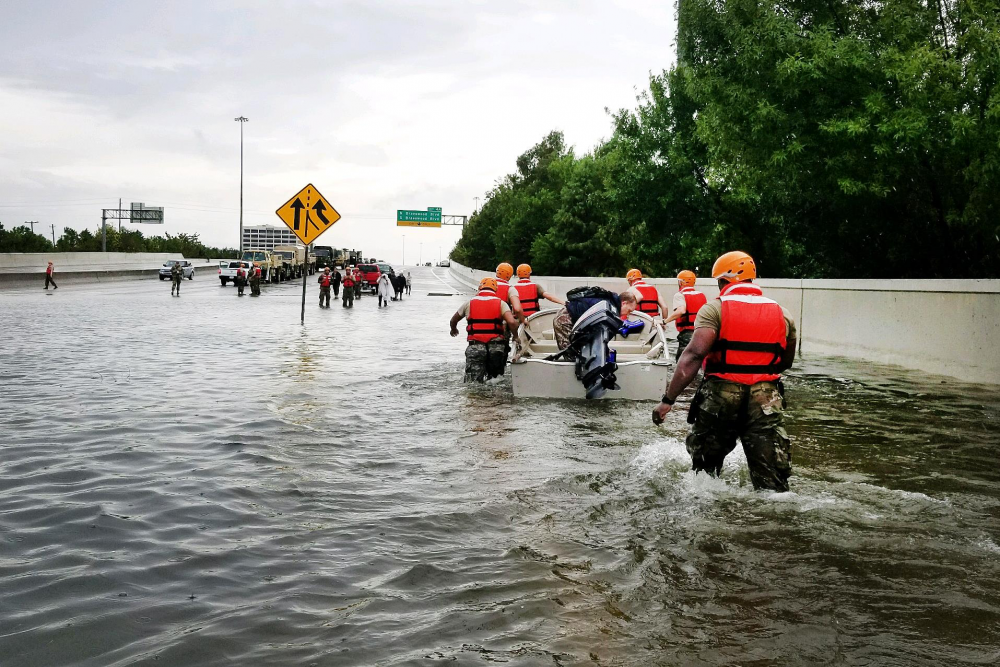Philanthropy and Disaster Relief with Lori Bertman

This article first appeared in the Greater Kansas City Community Foundation Grow Your Giving blog and is reprinted with permission.

The Greater Kansas City Community Foundation exists to serve donors and help them give to the causes they care deeply about. We know that donors’ passions are exacerbated in a time of greater need, as is the case during and after a disaster or tragedy. Donors come to us to determine how they can help when disaster strikes, and we’re proud to help them make a difference.
The Community Foundation recently invited Lori Bertman, national expert in the field of disaster philanthropy, to speak with both corporate and individual donors in Kansas City.
Lori currently serves as the President and CEO of the Irene W. and C.B. Pennington Foundation, Louisiana’s largest private family foundation. Additionally, Lori co-founded and serves as Board Chair of the Center for Disaster Philanthropy. She has been directly involved in the recovery efforts of multiple natural disasters including Hurricanes Katrina, Harvey and Irma. The Federal Emergency Management Agency (FEMA) asked Lori to travel to the U.S. Virgin Islands as the first philanthropic partner to formally join a disaster recovery team in the aftermath of the 2017 Atlantic hurricane season.

Lori spoke to local employers over breakfast at Corporate Giving Network and discussed the role that companies play in the immediate and long-term recovery following a disaster.
“The best time to give is yesterday – before a disaster even happens,” Lori says. “The majority of giving happens eight weeks after a disaster but full recovery can take decades. My best advice is to give as much as you can, as often as you can, throughout the entire life cycle of a disaster.”
Lori also stressed the importance of giving cash gifts rather than in-kind donations. Needs can more quickly be met by local agencies and organizations that can purchase supplies as needed in their own local economy and also consider cultural sensitivities.
“People expect corporations to do something when disaster strikes,” Lori says. “They even make purchasing decisions based on how a company has reacted to tragedy.”
A team of experts at the Community Foundation specializes in setting up disaster relief funds for companies of all sizes. Many companies who utilize our matching gift services track their employees’ volunteer hours and match their time as a monetary gift – not just in times of tragedy. For organizations that have multiple giving programs, a corporate foundation can serve as an umbrella to organize corporate giving under one structure.
For individuals and families who want to help in the days and weeks following a disaster, donor-advised funds allow donors to make grants directly to nonprofit organizations in communities impacted by disaster.
At a Donor-to-Donor luncheon, Community Foundation donors gathered to hear Lori address how individuals can help make a difference in a time of tragedy. Much like businesses, individual donors should also devise a giving strategy to give as often as they can to disaster relief.
Lori explained the concept of “disaster fatigue” and how many people feel overwhelmed by the constant media coverage of one tragedy after another. Donors often have the desire to help, but aren’t sure where to begin, afraid that their donation won’t make a difference.
“Give to the causes you care about and support,” Lori says. “If you love to support animal welfare or education, continue to support those causes in a disaster, too. Gifts of any size still make a difference. Philanthropy is a very small part of a bigger relief picture – but one of the most important.”
More like this

How American Households Responded to Disasters

